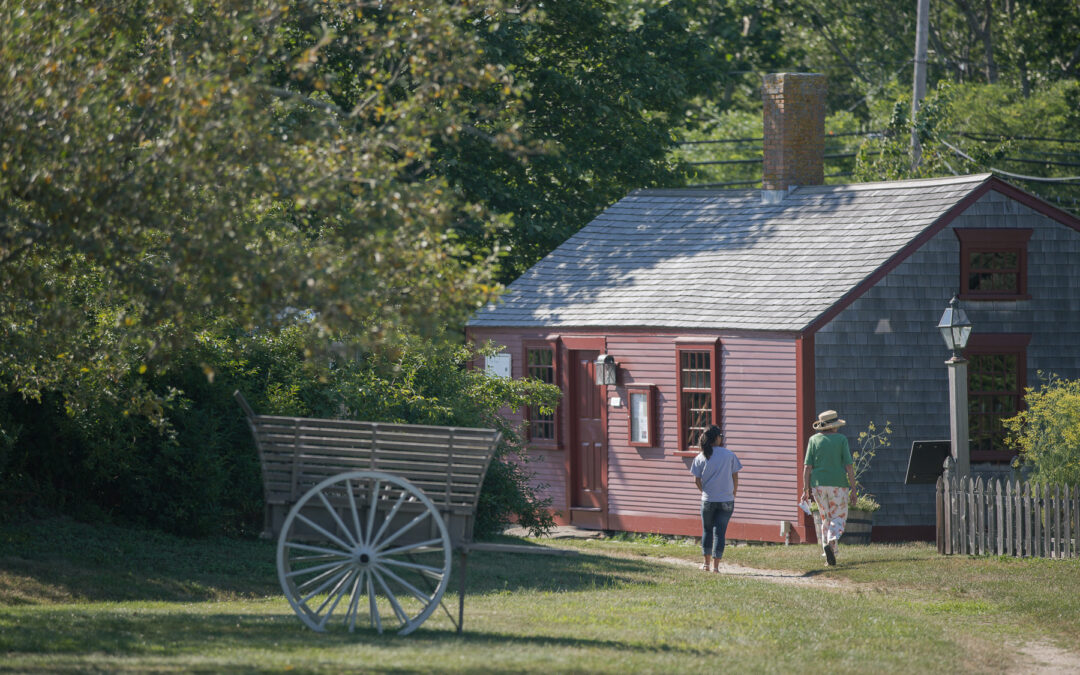
by NRF User | Jul 27, 2021 | NRF News
Newport Restoration Foundation is excited to be able to continue in-person programs and events at our museums this season. Rough Point Museum, Whitehorne House Museum, and Prescott Farm will offer a variety of free and ticketed programs for all ages and interests. Please mark your calendars for upcoming special events including:
Summer Stories
Whitehorne House Museum (416 Thames Street, Newport)
Fridays until August 27 / 10:00 – 11:00 AM
Free admission
Listen to storybook readings in the garden and put together a themed craft to take home. Recommended for kids aged Pre-K to 1st grade.
Picnic Performances at Rough Point: Kaiholunuie Polynesian Dance Company
Rough Point Museum (680 Bellevue Avenue, Newport)
August 6 / 6:00 – 7:30 PM
$15 – Advance registration recommended
The Kaiholunuie Polynesian Dance Company brings the Pacific to the Atlantic with a performance from the grounds of Rough Point. Visitors can lounge on the grass amongst the blooms in the Formal Garden, or bring blankets, chairs, or pillows to relax. Grounds open at 6:00pm, performance begins at 6:30pm.
Second Sundays
Prescott Farm (2009 West Main Road, Middletown)
August 8 / 12:00 – 3:00 PM
Free admission
Each month, NRF joins with a non-profit partner to highlight the expansive history and horticulture of Prescott Farm. In August, the Portsmouth Arts Guild shows us the basics of plein air painting, and visitors will have a chance to do some painting themselves!
Yoga in the Yard at Rough Point
Rough Point Museum (680 Bellevue Avenue, Newport)
August 12 / 6:00 – 7:00 PM
$15 – Advance registration required
Unwind and get ready for the weekend with an hour-long sunset yoga class on the grounds of Rough Point. Bring your yoga gear and join us for a relaxing and re-energizing Vinyasa Flow session led by Patti Doyle from Middletown’s Innerlight Yoga, set against our expansive ocean backdrop.
In the Waves
Rough Point Museum (680 Bellevue Avenue, Newport)
Performances held August 18-21, 24-28 / 2:00—4:30 PM
Free admission
In the Waves, by artist Melissa McGill, is a series of live free public art performances activating the landscape and evoking the urgency of rising sea levels and a rapidly changing climate. The performances will take place on the grounds of Rough Point Museum. Free grounds admission will be available to the public for the month of August. The project is a collaboration between Art&Newport and Newport
Restoration Foundation’s Keeping History Above Water initiative.
Roam Around Rough Point
Rough Point Museum (680 Bellevue Avenue, Newport)
August 28 / 5:00 – 7:00 PM
$0-$20; Newport County Residents are free!
On the last Saturday of every month, explore the house and gardens after hours. Newport County residents receive FREE admission! For more info visit newportrestoration.org/events.
by NRF User | Jul 9, 2021 | NRF News
In the Waves, by artist Melissa McGill, is a series of live free public art performances activating the landscape and evoking the urgency of rising sea levels and a rapidly changing climate. The artist invites members of local communities to join the ensemble of this inclusive movement artwork and support the community through a shared meaningful experience about these environmental themes.
Be part of a community ensemble in this work’s creation under the guidance of the artist and Melanie George, producer and dramaturg and Davalois Fearon, choreographer. The project will take place at Rough Point in Newport, Rhode Island presented by Art & Newport, curated by Dodie Kazajian, with Newport Restoration Foundation’s initative Keeping History Above Water. For more about Artist Melissa McGill, click here.
OPEN CALL FOR PARTICIPANTS! YOU ARE INVITED!
WE ARE LOOKING FOR A TOTAL OF 100 COLLABORATORS
— ages 15 and older
— no experience necessary
— available for all performance and rehearsal dates
THE PERFORMANCES DATES
August 18 to 21 (Wednesday through Saturday)
August 24 to 28 (Tuesday through Saturday)
2:00pm—4:30pm
Rehearsal dates August 15, 16 and 17 from 1pm- 5pm
THE DETAILS
$15/hour for both performances and rehearsals.
We’ll also provide snacks and beverages.
Email inthewavesnewport@gmail.com with questions.
TO SIGN UP
For easy application click here.
Please help us spread the word!
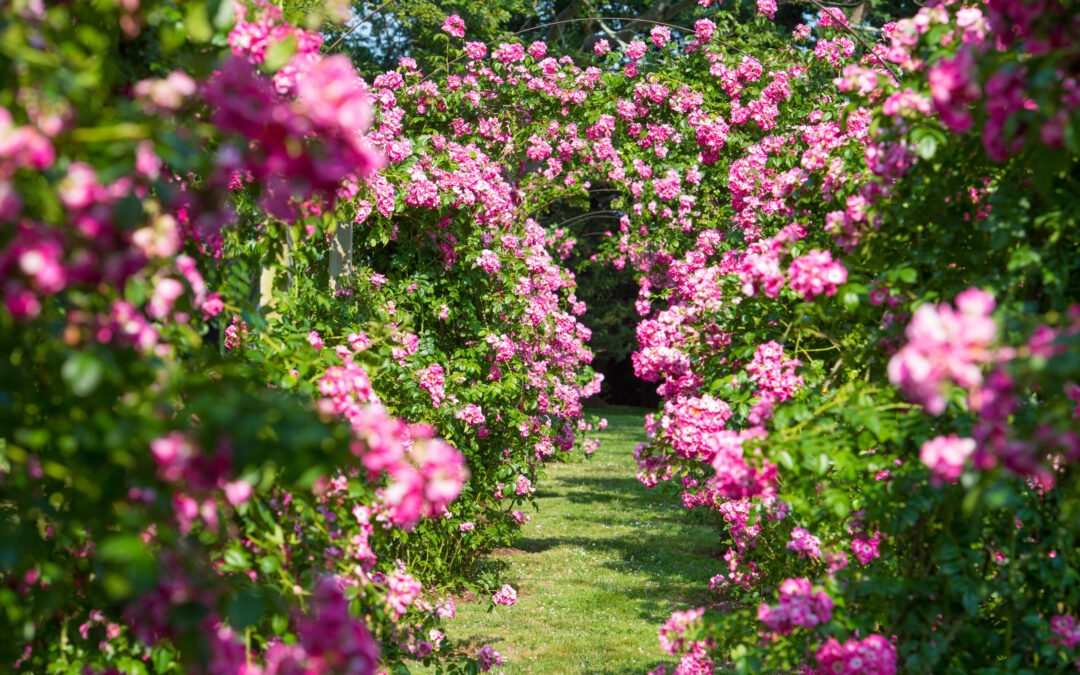
by NRF User | Jul 8, 2021 | NRF News
Working in a garden makes you keep track of seasons and time in a different way than the calendar. As the Estate Gardener at the Newport Restoration Foundation, I watch for the year’s passing through the evolution of the grounds, what blooms and what fades, and I feel more in tune with the world through the looking glass of nature. My anticipation for July starts when I begin to notice rose buds forming on our formal garden rose arbor. The American Heritage Pillar roses bloom only once a year, in a fantastic show of simple pink blooms, which serve as a kind of landmark for summer’s true beginning. Visitors stand in awestruck amazement at the display and walk through the arbor as if walking through a fairytale. For a brief two weeks we watch the roses as if listening to a well-constructed symphony- quietly they begin to bloom, then suddenly the flowering picks up its pace and crescendos to a loud explosion of color. It holds at that grandeur, almost too briefly, and then the petals begin to fall, colors begin to fade, and the rose arbor becomes silent again.
I am most excited for the roses to bloom this year because for the entirety of the cold month of February I labored over the vines; pruning out dead wood, cutting out last year’s rose hips, and re-tying the vines to the arbor. After a few late fall windstorms last year, the rose arbor needed much reinforcement- whole sections of the vines fell from the structure and needed to be pulled back into place over the arches and sides. This was a difficult, lengthy, and painful task. In order to pull the vines up I had to separate sections of them out from each other, untangling years’ worth of growth, while trying not to damage too much of the vine as to not lose rose buds for the summer. Using soft wire around a section of vines I would pull them into place, attaching it as close to the arbor as possible, then do the same over again, readjusting the tightness of each wire as I went. Slowly, piece by piece, the vines would be brought back into place, and secured back to the arbor in several places to ensure that it would stay in place during future windstorms. For good measure, I tied new wire around all of the sections of the rose arbor, as the old wire put in place years before was starting to break and sag under the sheer weight of the vines. I stood on the ladder, face turned to the February sun and smiled knowing that all the work would be worth it when I could see the flowers bloom in July.
For the first few weeks of June I kept checking in on the roses every week, looking, almost frantically, for the buds- as if, all the work I had done to keep the plant healthy might have actually resulted in an absence of buds and a year without flowers. Finally the buds began to emerge, and with the buds came aphids. Four years ago when I first started working in the gardens at Rough Point, I was seriously alarmed when I noticed them. There were so many aphids they seemed to almost drip from the buds. Using an organic pest control method, I sprayed the aphids out of fear of them damaging the blooms by sucking the sweet sap from the rose buds. I would check on the aphids every day until finally I noticed lady bugs, in all stages of their life cycle appearing to feast on them. Looking closely through a loupe I spotted aphids that had been parasitized by tiny parasitizing wasps. With a sigh of relief I realized that nature takes care of itself. I no longer fret over the aphids on the roses, and they continue to bloom spectacularly regardless of the alarming numbers the aphids that suddenly show up year after year.
After the rose arbor blooms and fades there is still so much to look forward to in our gardens. The Kitchen Garden will soon be producing a plentiful summer bounty of tomatoes, cucumbers, squash, eggplant, and peppers. Summer flowers will be blooming on their tall stalks reaching for the sun, the dahlias will grow taller and push out their first blooms.
As mid-summer approaches, we prepare for the heat and the promise of beach days, ice cream cones, longer days, and fantastic sunsets. As a gardener, I prepare for the great crescendo of a symphony of color and my immense feeling of gratitude and wonderment as I watch the world around me unfold in spectacular beauty. I gather everything that I have learned in these gardens together and begin to wonder what else can I add to this symphony of growth and color? How can we draw out summer a little longer through the progression of colors that rise and fall in our gardens with the ticking of time? The answer comes slowly, with patience and understanding. It comes with experimentation, new ideas about plantings or growing methods that either fail or succeed. Most importantly it comes with the recognition that gardens are all around us and will always be there to provide inspiration. The world needs more gardens, so that we can all look around ourselves and experience the joy of the summer in the vibrant colors of blooms that only get the chance to arrive but once a year.
By Tessa Young, Estate Gardener, Newport Restoration Foundation
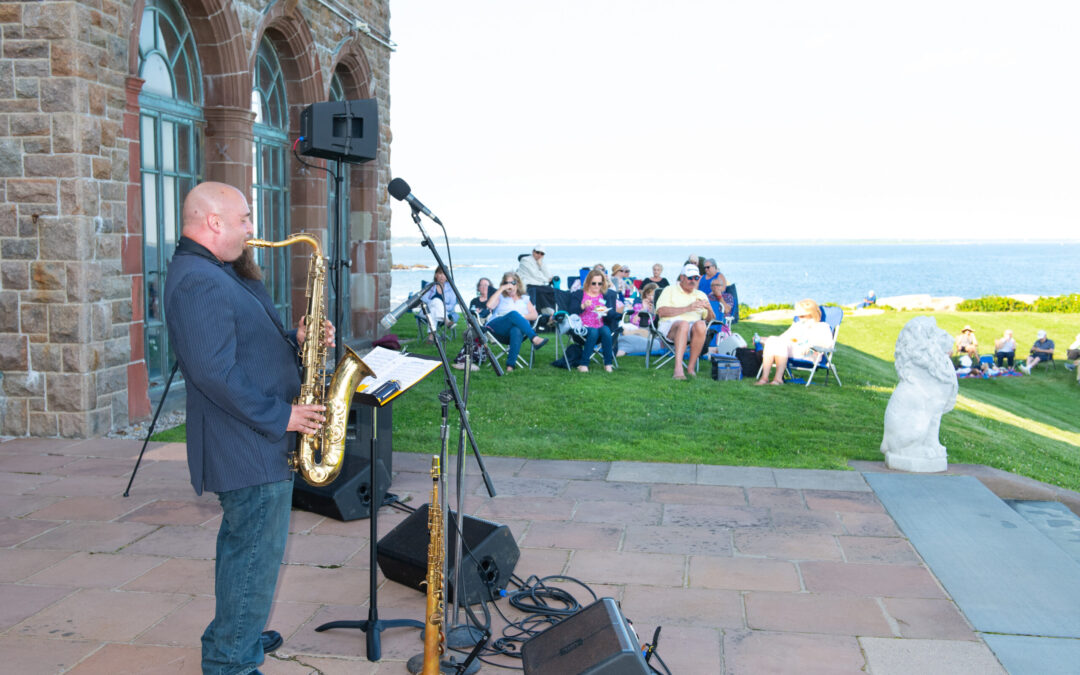
by NRF User | Jun 29, 2021 | NRF News
Newport Restoration Foundation is excited to be able to continue in-person programs and events at our museums this season. Rough Point Museum, Whitehorne House Museum, and Prescott Farm will offer a variety of free and ticketed programs for all ages and interests. Please mark your calendars for upcoming special events including:
Summer Stories
Whitehorne House Museum (416 Thames Street, Newport)
Fridays: July 2, 9, 16, 23, 30 / 10:00 – 11:00 AM
Free admission
Listen to storybook readings in the garden and put together a themed craft to take home. Recommended for kids aged Pre-K to 1st grade.
Picnic Performances at Rough Point: The Rhode Island Black Storytellers
Rough Point Museum (680 Bellevue Avenue, Newport)
July 2 / 6:00 – 7:30 PM
$15 – Advance registration recommended
Join us for our monthly outdoor art performance series on the grounds of Rough Point. In July, the Rhode Island Black Storytellers take the stage at Rough Point for a series of independence-themed stories set to music. Visitors can lounge on the grass amongst the blooms in the Formal Garden, or bring blankets, chairs, or pillows to relax. Grounds open at 6:00pm, performance begins at 6:30pm.
Woodcarving Demonstration
Whitehorne House Museum (416 Thames Street, Newport)
July 10 / 2:00 – 3:00 PM
$30 – Advance registration recommended
Mary May, founder of Mary May’s School of Traditional Woodcarving, leads a woodworking demonstration in the garden at Whitehorne House Museum. Discover how Newport’s distinct block-and-shell patterns are carved, seen on a number of 18th-century furniture pieces inside the museum.
Second Sundays
Prescott Farm (2009 West Main Road, Middletown)
July 11 / 12:00 – 3:00 PM
Free admission
Each month, NRF joins with a non-profit partner to highlight the expansive history and horticulture of Prescott Farm. In July, the crew of the SSV Oliver Hazard Perry visits to demonstrate the surprising connections between ships and windmills (hint: it’s all in the sails!).
Jazz on the Lawn
Rough Point Museum
July 15 / 6:30 – 8:00 PM
$20 – Advance registration recommended
Grab a picnic basket and blanket, and take in the ocean breezes while the Leon Lee Dorsey Quartet jams on the Rough Point terrace.
Historical Makerspace Workshop: Paint Making
Whitehorne House Museum (416 Thames Street, Newport)
July 25 / 11:00 AM – 12:00 PM
$20 – Advance registration recommended
Kids from 10-100 are welcome at this fun paint making workshop outside of Whitehorne House. Discover how people have made paint throughout history using a variety of sources to create different colors and textures, then make your own painted masterpiece in this hands-on program.
Roam Around Rough Point
Rough Point Museum (680 Bellevue Avenue, Newport)
July 31 / 5:00 – 7:00 PM
$0-$20; Newport County Residents are free!
On the last Saturday of every month, explore the house and gardens after hours. Newport County residents receive FREE admission! For more info visit newportrestoration.org/events.
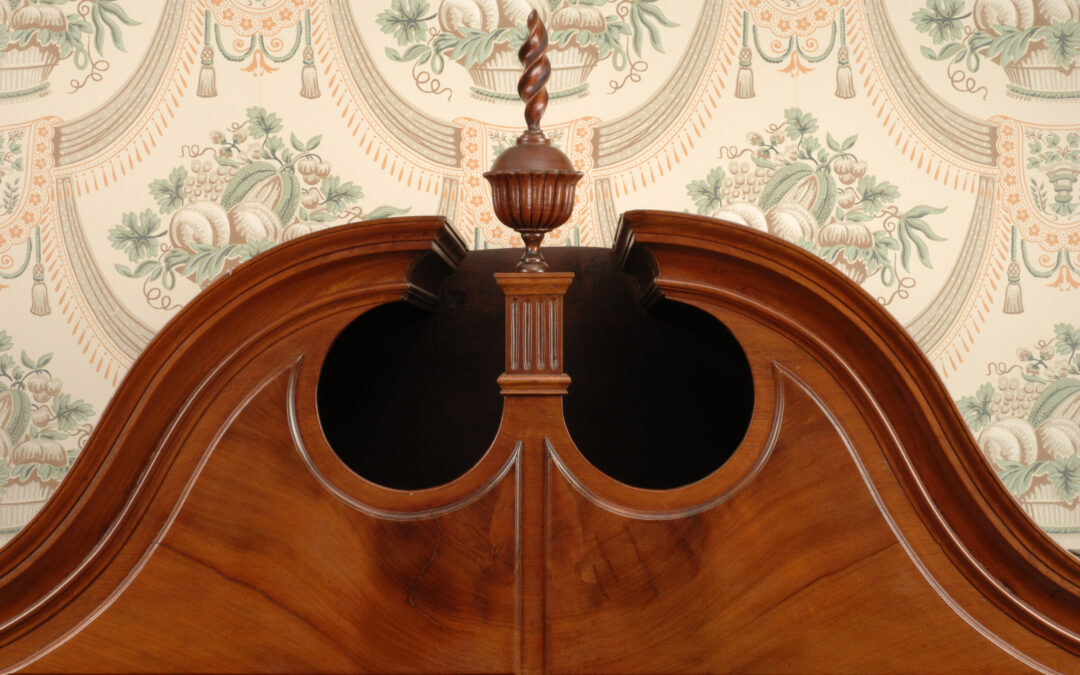
by NRF User | Jun 14, 2021 | NRF News
Join the Newport Restoration Foundation and its Whitehorne House Museum for a series of online discussions that explore why Americans routinely seek inspiration from the material culture and personalities of British, colonial America. In other words, “Why do we return to the Colonial Revival?”
Beginning at 7:00 pm, every Wednesday night in July, we will host a variety of scholars, artisans, and museum professionals to discuss the profound impact 18th century aesthetics and history had and continue have on American culture.
July 7th 7:00 pm Discussion: Creating Antiques
Briann Greenfield, Ph.D., the Director of Preservation and Access at the National Endowment for the Humanities and the author of Out of the Attic: Antiques in 20th Century New England, and Erica Lome, Ph.D., historian and the Peggy N. Gerry Curatorial Associate at the Concord Museum will discuss the ways in which a group of early 20th century immigrants helped create the American antique business, spurring interest in 18th-century American furniture and other material culture.
July 14th 7:00 pm Discussion: Reviving Colonial Furniture
Steven Brown, a former member of the cabinet and furniture making faculty for 21 years at the North Bennet St. School in Boston, and Mickey Callahan, the co- founder and past president of the Society of American Period Furniture Makers will discuss why they find inspiration and excitement in recreating the forms and styles of 18th-century American furniture.
July 21st 7:00 pm Discussion: Comparative Revivals
Dennis Carr, the Virginia Steele Scott Chief Curator of American Art at the Huntington Library, Art Museum and Botanical Gardens, Elizabeth Humphrey, former Curatorial Assistant and Manager of Student Programs at Bowdoin College Museum of Art and PhD student, Art History, University of Delaware, and Lydia Mattice Brandt, Ph.D., Associate Professor of Art History at the University of South Carolina, will compare a variety of aesthetic revivals in American life, and consider their significance, from Southern California’s famed Mission Revival, to the Moorish Revival of the late 19th and early 20th centuries, and the 20th and 21st century revivals of Colonial Southern architecture and material culture.
July 28th 7:00 pm Discussion: Revivals in Practice
Ruth Taylor, the Executive Director of the Newport Historical Society, and Reginald Richard, an actor in the Washington, D.C. area and an interpreter at George Washington’s Mt. Vernon will join NRF staff to discuss the practical realities and challenges of interpreting 18th-century American life.
RSVP required – please respond to Dr. Erik Greenberg by Friday, July 2nd at erik@newportrestoration.org to receive free access to the online discussions.
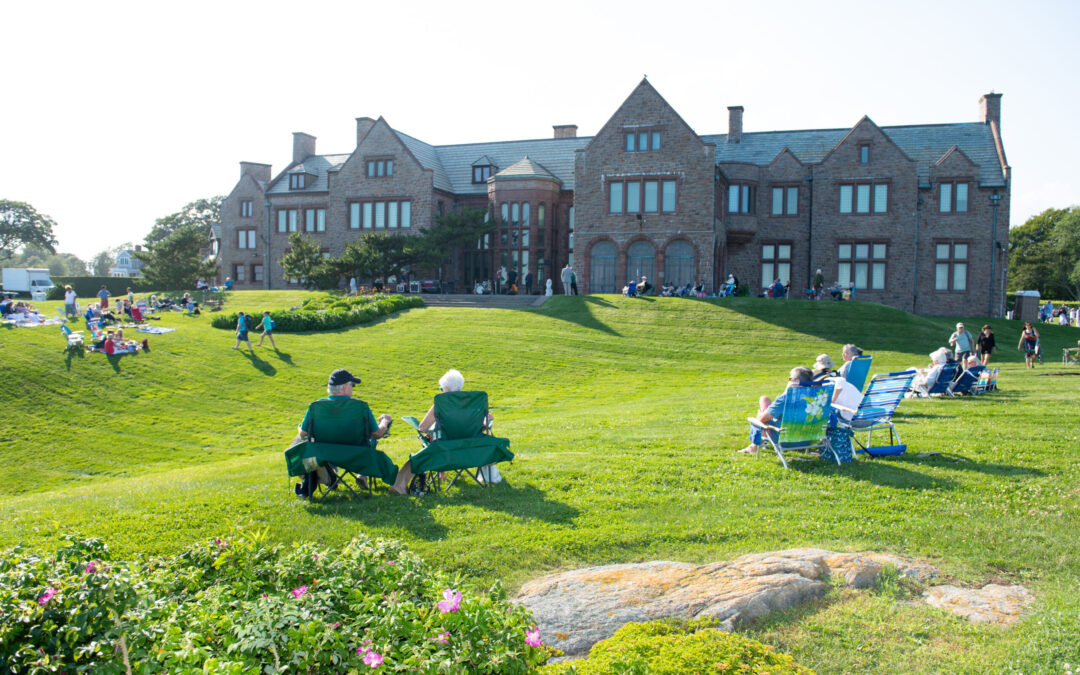
by NRF User | Jun 2, 2021 | NRF News
Newport Restoration Foundation is excited to be able bring both virtual and in-person programs and events back to our museums this month! Rough Point Museum, Whitehorne House Museum, and Prescott Farm will offer a variety of free and ticketed programs for all ages and interests. Please mark your calendars for upcoming special events including:
Virtual Jazz in the House
Youtube
June 2 / 7:00 PM / Free
You’re invited virtually to Rough Point for a special jazz concert! In Doris Duke’s lifetime, music often filled the halls of her Newport home, and NRF is excited to bring jazz music back into the house for this filmed performance featuring Leon Lee Dorsey, Greg Skaff, and Mike Clark playing interpretations of tunes by jazz titan Thelonious Monk.
Summer Stories
Whitehorne House Museum (416 Thames Street, Newport)
Fridays: June 4, 11, 18, 25 / 10:00 – 11:00 AM
Free admission
Listen to storybook readings in the garden and put together a themed craft to take home. Recommended for kids aged Pre-K to 1st grade.
Picnic Performances at Rough Point: Poetry Reading by Tina Cane
Rough Point Museum (680 Bellevue Avenue, Newport)
June 4 / 6:00 – 7:30 PM
$15 – Advance registration recommended
Join us for our monthly outdoor art performance series on the grounds of Rough Point. In June, Rhode Island’s Poet Laureate, Tina Cane, brings her poetry to Rough Point for a reading from her recently published works. Visitors can lounge on the grass amongst the blooms in the Formal Garden, or bring blankets, chairs, or pillows to relax. Grounds open at 6:00pm, performance begins at 6:30pm.
Second Sundays
Prescott Farm (2009 West Main Road, Middletown)
June 13 / 12:00 – 3:00 PM
Free admission
Each month, NRF joins with a non-profit partner to highlight the expansive history and horticulture of Prescott Farm. In June, the Audubon Society of Rhode Island will share what they know about the beautiful birds that live all around us through hands-on activities and crafts; all questions and bird stories welcome!
Woodcarving Demonstration
Whitehorne House Museum (416 Thames Street, Newport)
June 19 / 2:00 – 3:00 PM
$30 – Advance registration recommended
Steve Brown, experienced woodworker and professor at the North Bennet Street School, leads a woodworking demonstration in the garden.
Roam Around Rough Point
Rough Point Museum (680 Bellevue Avenue, Newport)
June 26 / 5:00 – 7:00 PM
$20 / Students with ID: $12 / Newport County Residents FREE
On the last Saturday of every month, explore the house and gardens after hours. Newport County residents receive FREE admission! For more info visit newportrestoration.org/events.
Historical Makerspace Workshop
Whitehorne House Museum (416 Thames Street, Newport)
June 27 / 11:00 AM – 12:00 PM
$20 – Advance registration recommended
Discover how 18th-century students learned geography through needlework, then make your own embroidered map of Newport. Kids 10 – 100 welcome!
For more information on events and to purchase tickets, visit www.newportrestoration.org/events.





